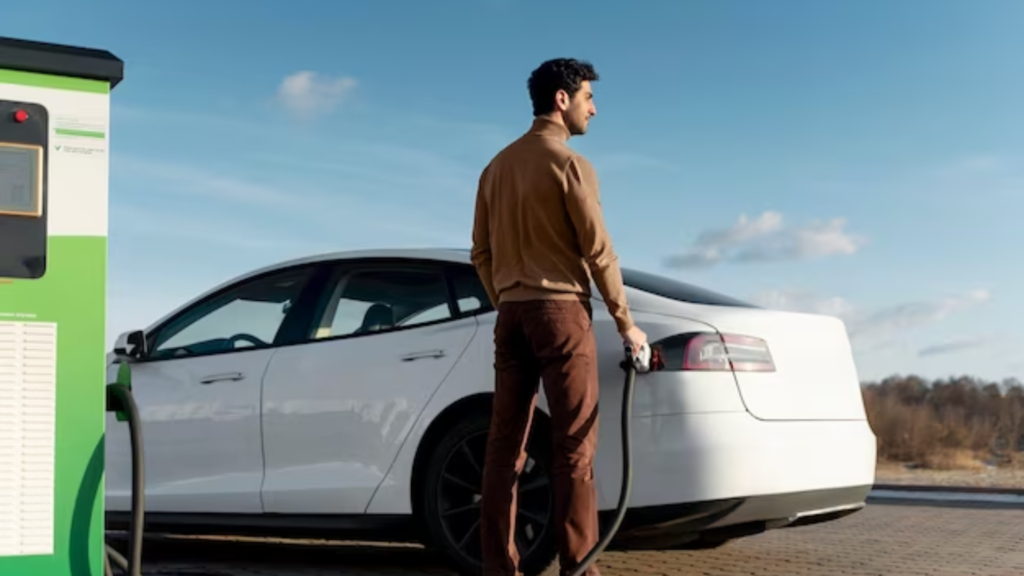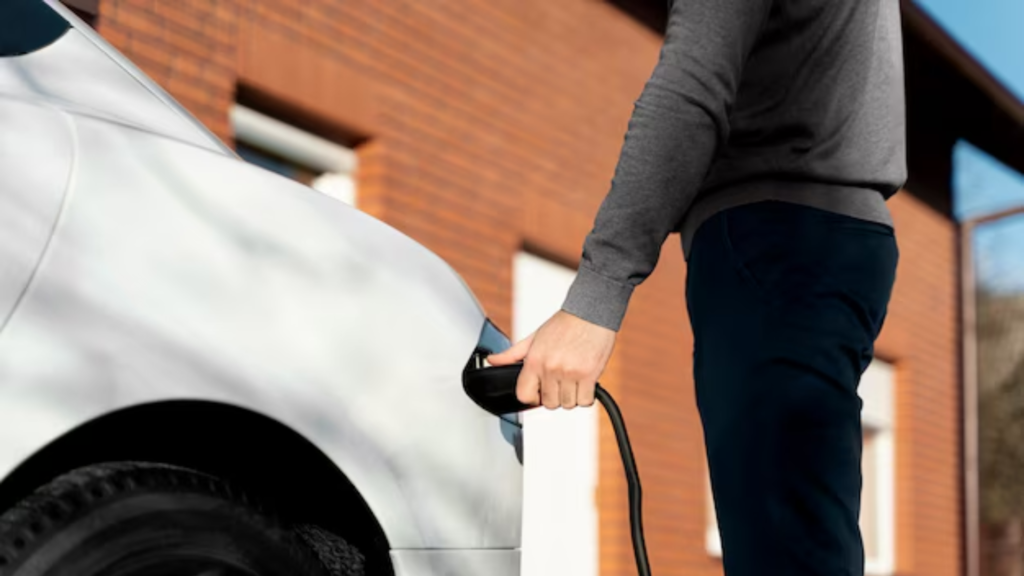Does Tesla Home Install EV Cost in California?
Does tesla home install ev cost cal If you’re in California and looking to install an electric vehicle (EV) charger at home, you may have heard about Tesla’s home charging solutions. Tesla is a leading player in the electric vehicle industry, offering charging options designed to work seamlessly with their cars. But how much does it cost to install a Tesla home charger in California, and what factors influence the price?
In this blog post, we’ll break down everything you need to know about Tesla home EV installations in California. From the types of chargers available to the overall cost and benefits of home charging, we’ll cover it all. Whether you are a Tesla owner or considering purchasing an electric vehicle, this guide will help you understand the investment involved.
What is Tesla Home EV Installation?
Tesla home EV installation refers to the process of setting up a Tesla wall connector or another compatible charging station at your home. These charging stations allow you to charge your Tesla electric vehicle (EV) in the comfort of your home, typically overnight.
The installation is done by a certified electrician, and the cost can vary based on several factors, including the type of charger, the electrical work required, and your location within California.
Types of Tesla Chargers
Tesla offers a few different charging options for homeowners:
Tesla Wall Connector
The Tesla Wall Connector is the most popular option for home installation. It offers the fastest charging speed and can be installed both indoors and outdoors. It is designed specifically for Tesla vehicles, although it can also charge other EVs with an adapter.
NEMA 14-50 Outlet
If you’re looking for a more budget-friendly option, the NEMA 14-50 outlet is another popular choice for charging Tesla vehicles. This outlet offers a slower charging speed compared to the Tesla Wall Connector, but it can be a good alternative for those who want to avoid the higher installation costs of the Wall Connector.
Tesla Mobile Connector
The Tesla Mobile Connector is an optional portable charger that you can use with a regular 120V outlet. While this is the slowest charging method, it can be useful as a backup option or if you don’t use your Tesla daily.

How Much Does Tesla Home EV Installation Cost in California?
The total cost of installing a Tesla home charger in California depends on various factors, such as the type of charger, the complexity of the installation, and whether any upgrades to your electrical system are necessary.
Tesla Wall Connector Installation Costs
Installing a Tesla Wall Connector typically ranges from $500 to $2,000. The price depends on several factors, including:
- Electrical Work: If your home’s electrical system needs upgrading to handle the additional load required for charging, this could significantly increase the cost.
- Location: The cost of labor can vary by region in California. For example, installation in cities like San Francisco or Los Angeles may be more expensive due to higher labor costs.
- Permit Fees: Some areas in California require permits for electrical work. This fee can range from $100 to $500, depending on your local regulations.
- Charger Cost: The Tesla Wall Connector itself costs around $500–$550. However, the cost of the charger is usually separate from the installation fee.
NEMA 14-50 Outlet Installation Costs
If you opt for the NEMA 14-50 outlet, installation costs are generally lower. The price for this type of installation usually falls between $300 and $1,000. This option is a good choice if you’re looking for a cheaper alternative to the Tesla Wall Connector but are still seeking relatively fast charging.
Mobile Connector Costs
The Tesla Mobile Connector typically comes with the vehicle, but if you need an additional one, it will cost around $200–$300. However, this charger does not require a complex installation and simply needs to be plugged into a standard 120V outlet.
Factors Affecting the Installation Cost
There are several factors that can influence the final cost of your Tesla home charger installation:
Electrical Upgrades
If your home’s electrical system is outdated or doesn’t support the additional load required for EV charging, you may need to upgrade your electrical panel. This can significantly add to the overall cost, with panel upgrades often costing between $1,000 and $3,000.
Distance from Electrical Panel
The closer the charging station is to your electrical panel, the less expensive the installation will be. If the installation requires significant rewiring or drilling, it will cost more.
Local Permit Fees
As mentioned earlier, some areas in California require permits for home EV installations. Permit fees can vary greatly depending on your location. Be sure to check with your local building department to find out what permits are required.
Labor Costs
Labor costs can vary depending on the location and the complexity of the installation. On average, you can expect to pay between $75 and $150 per hour for an electrician’s services in California.
Benefits of Installing a Tesla Home EV Charger
While the upfront cost of installing a Tesla home charger can be significant, the long-term benefits make it a worthwhile investment for many EV owners.
Convenience
Having a home charger allows you to charge your Tesla overnight, ensuring that it’s ready to go when you need it. No more worrying about finding a public charging station or waiting in line.
Cost Savings
While it costs money upfront, installing a home charging station can save you money over time. Charging your EV at home is often much cheaper than relying on public charging stations, especially if you can take advantage of off-peak electricity rates.
Faster Charging
A Tesla Wall Connector offers faster charging than public chargers and the standard NEMA 14-50 outlet, meaning you can quickly top up your vehicle and get back on the road.
Increased Home Value
As electric vehicles become more common, having a home EV charger can add value to your property. This is especially true in environmentally-conscious areas like California, where home buyers may be looking for homes with EV charging capabilities.

Conclusion
Installing a Tesla home EV charger in California is an investment that offers convenience, cost savings, and faster charging. The cost of installation can vary depending on the type of charger you choose, the condition of your home’s electrical system, and local regulations. While the upfront costs can be significant, the long-term benefits make it a worthwhile investment for many Tesla owners.
Before you begin your installation, be sure to get multiple quotes from licensed electricians, check for any necessary permits, and ensure your electrical system is ready to handle the additional load. With the right setup, you’ll be able to enjoy the convenience of charging your Tesla at home and hit the road with confidence.
FAQs
1. How much does it cost to install a Tesla Wall Connector in California?
The installation cost for a Tesla Wall Connector typically ranges from $500 to $2,000, depending on factors like electrical work, location, and labor costs.
2. Is the Tesla Wall Connector worth the cost?
Yes, the Tesla Wall Connector offers the fastest charging speeds and is a more convenient option for daily use. It is especially beneficial if you drive frequently or need quick charging.
3. Can I use a regular 120V outlet to charge my Tesla?
Yes, you can use a standard 120V outlet with the Tesla Mobile Connector, but it charges much slower than the Wall Connector or NEMA 14-50 outlet.
4. How long does it take to install a Tesla home charger?
Installation typically takes a few hours, but the time can vary based on the complexity of the electrical work and the type of charger being installed.
5. Are there any rebates or incentives available for home EV charger installations in California?
Yes, California offers various incentives and rebates for home EV charger installations, including the California Electric Vehicle Infrastructure Project (CALeVIP) and local utility company programs. Be sure to check eligibility before starting your installation.
